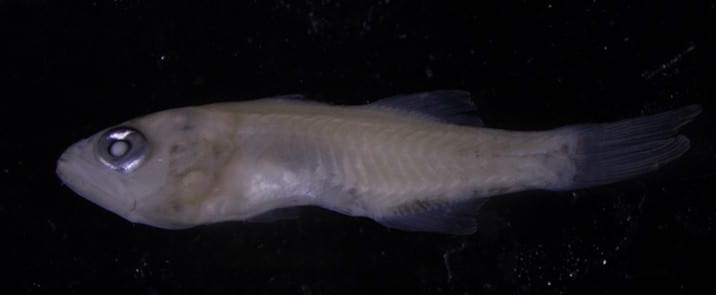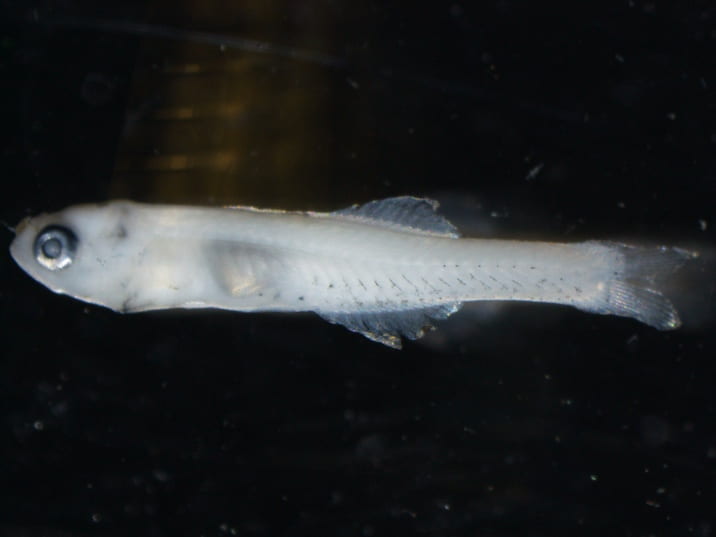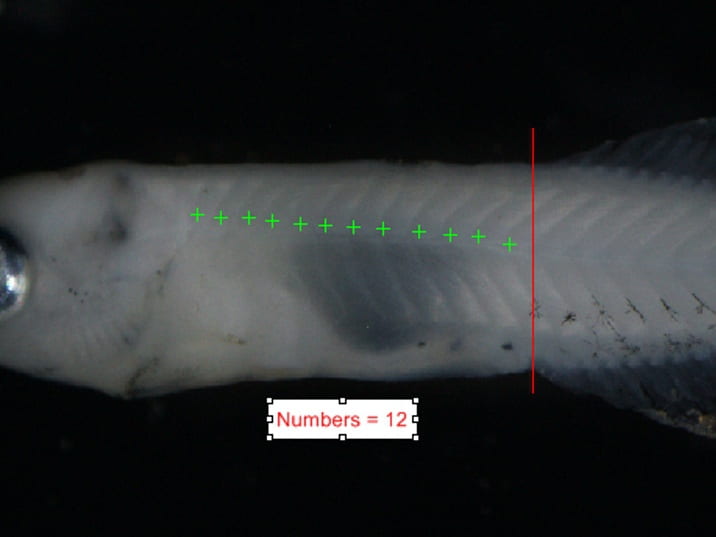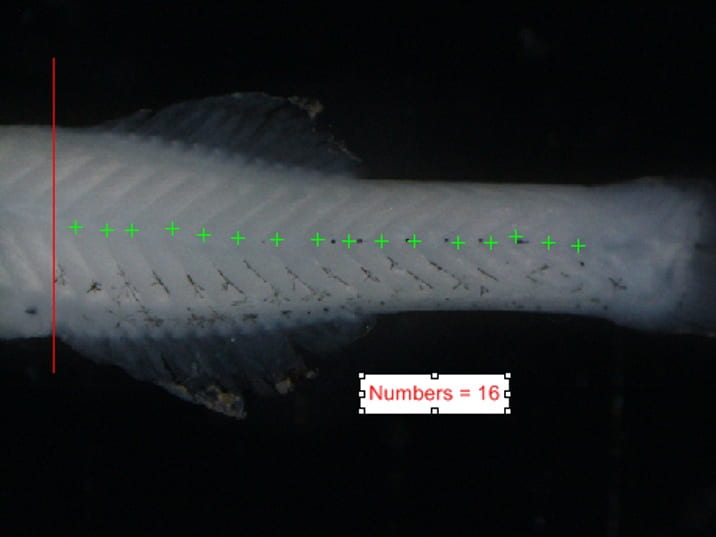Key Characteristics:
- 26 or less total myomeres
- Preanal myomeres:10-13
- Postanal myomeres: 10-12
- Preanal and postanal myomeres approximately equal (difference of no more than 1 myomere)
- Straight or S-shaped gut

Larval White Perch. 18 mm. United States Fish Wildlife Service. Green Bay Harbor, WI. Brianna McDowell. 2017.

Larval White Perch. United States Fish Wildlife Service. Marian Shaffer. 2017.

Larval White Perch’s Pre-Anal Myomeres. United States Fish Wildlife Service. Marian Shaffer. 2017.

Larval White Perch’s Post-Anal Myomeres. United States Fish Wildlife Service. Marian Shaffer. 2017.
- Body not elongated, eel-shaped, round in transverse section, uniformly pigmented (1B)
- Chin barbels absent (3B)
- Snout short, its length usually less than 10% TL; median fins otherwise (5B)
- Median fins or finfolds showing distinct separation (7B)
- No adipose fin, or demarcation of one, in finfold (10B)
- Preanal myomeres greater than or equal to postanal myomeres (14A)
- Preanal myomeres approximately equal to postanal myomeres (difference five myomeres or less) (15A)
- Total myomeres less than 35 (20B)
- Total myomeres less than 26 (21A)
- Preanal myomeres usually equal to postanal myomeres (or difference of one); head smaller, pointed; mouth smaller, maxilla extending to middle of eye, caudal fin forked at 12 mm TL (22B)
- Percichthyidae – Moronidae – temperate basses
Adult History
- Physical Description
- No black stripes on body, terminal mouth, green/sliver sides while having a black/green back, two separated dorsal fins, 44-52 ctenoid lateral line scales, anal fin has one spine with 8-10 rays, silver/white compressed body, and has 3 anal spines
- Spawning Habitat
- Steady rivers, lakes, and streams
- Shallow water (between 1- 4 meters)
- Spawning Substrate
- Spawns over shoals or gravel
- Gravel bars in tributary streams
- Spawning Behavior
- Polyandrous Mating
- Migrate upstream to spawn
- Time of Year
- May – June in Lake Ontario
- Spawning typically takes place at water temperatures of 50 – 60°F
- Diet
- Fish eggs and larvae, insects, crustaceans (zooplankton), and small fish (minnows)

